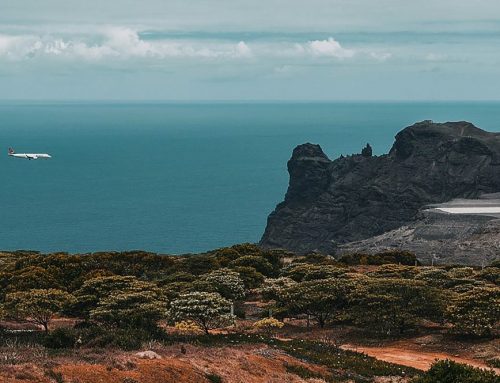On 28th May, ALBIUS IV, the second Exploration 60 in the series, returned to Cherbourg, France, following her first Atlantic circuit. This presented us the opportunity to interview the boat’s skipper, Philippe Hasne, and find out all about his 6-month sailing trip.
GY: What route did you take with the boat?
PH: We set out from Brittany in November 2023, enjoying a peaceful first leg to Lisbon, where we stayed until just after the festive season, heading next for the Canaries. A hop to Cape Verde followed, before he crossing to the West Indies. There, we sailed between the Grenadines and Guadeloupe, before returning to Cherbourg via the Azores. A nice 9,500-nautical mile loop in 6 months!
GY: So, what did you think of the boat’s behaviour?
PH: I was impressed by her comfort at sea. The passage through any chop is incredibly gentle, even in heavy seas as we experienced in Brittany just after Storm Ciaran. With her inertia, you literally feel as if you’re crushing the waves and carrying on through gently. What’s more, the amount the boat heels is very reasonable, even close-hauled, so it’s really very comfortable.

GY: What did you think of the performance?
PH: I was surprised by the performance in light airs. Our Atlantic crossing saw very little wind. But even in these light airs, we averaged nearly 8 knots on passage. There’s no doubt that this is a boat that likes to be sailed in unbridled conditions: as soon as you open up a little, with the right amount of wind, on the beam, it really goes! And with a bit more air, we were cruising at 9 knots, with peaks of 10 or 11. During the return trip across the Atlantic, still in medium conditions, we had 4 days close-hauled and were able to see that the boat is just as comfortable on this point of sail.
GY: For downwind sailing, what choice of sails did you make with the owner?
PH: : I’m all in favour of simplicity, especially as I knew we’d often be sailing short-handed. So we opted for a single, very large code 0, which works very well from upwind to having the wind on the beam, with 15 knots of apparent.
Downwind, in medium airs, we had the solent poled out, plus the staysail, with the mainsail, of course. And in light airs, I brought out the code 0, which I also poled out, and then added the solent to that. There’s no sock, everything furls, so it’s very easy to reduce sail from the cockpit, even in a squall. And it also means fewer sails to handle.


GY: Speaking of manoeuvres, how did you find the cockpit?
PH: There’s really nothing to say. The ergonomics of the helm station and the sailing manoeuvres have been very well thought out. Even though we obviously sailed mostly under autopilot, which behaved very well in fact.
As for the forward part of the cockpit, with its gigantic ‘saloon’ area, it’s unbelievably similar to the exterior of a catamaran. We only had to use the inside saloon once to have a meal, otherwise we were outside all the time, and well protected. Even when it was colder, before crossing, we closed off this area, like a hut, and with the warmth inside from the heater, we were super comfortable.
GY: What was it like in terms of comfort?
PH: The thing that impressed me most is the silence on board. The boat’s thermal insulation also provides soundproofing, whatever the conditions - it’s just amazing! Beyond that, there’s a lot of space, a huge galley, a view of the outside, large storage areas, a laundry room, a technical area, a workshop, a protected outside saloon... it’s all very comfortable, I’ve got to say.
GY: In anchorages, do you get noticed aboard a GARCIA Exploration 60?
PH: Oh yes! The boat turns people’s heads and makes them wonder. We’ve had lots of questions, and a few congratulations on the choice of boat...
Photo credit: François TREGOUET - MULTI.media









